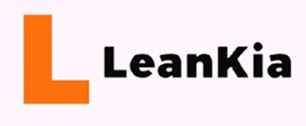Display Visual Management Through Labels: Enhancing Clarity and Efficiency
In today’s fast-paced business environment, clarity and efficiency are paramount. One powerful yet often overlooked tool in achieving these goals is visual management, particularly through the use of labels. Labels are more than just stickers; they are essential components of effective communication in any workspace. In this blog post, we’ll explore how display visual management through labels can enhance productivity, reduce errors, and create a more organized environment.
What is Visual Management?
Visual management refers to the use of visual cues—like signs, labels, charts, and colors—to convey information quickly and clearly. This approach helps teams to understand processes, workflows, and expectations without needing lengthy explanations or complex documentation. By making information accessible at a glance, visual management fosters a culture of transparency and efficiency.
The Role of Labels in Visual Management
Labels serve as visual aids that help to organize information and guide actions in various settings, from manufacturing floors to office environments. Here are several key benefits of using labels in visual management:
1. Enhanced Organization
Labels help categorize and identify items, whether they’re tools in a workshop, files in an office, or products on a shelf. By clearly marking storage areas and resources, labels reduce clutter and ensure that everyone knows where to find what they need.
2. Improved Communication
With labels, teams can convey important information quickly. For example, color-coded labels can indicate the status of tasks or materials—red for urgent, green for completed, and yellow for pending. This immediate visual feedback fosters better communication and coordination among team members.
3. Error Reduction
Misunderstandings and mistakes can be costly. By using clear, concise labels, organizations can minimize errors. Labels that provide instructions or highlight safety information can prevent accidents and ensure that processes are followed correctly.
4. Increased Accountability
When everything is clearly labeled, it’s easier to identify responsibilities. For instance, labeling equipment with owner names or usage guidelines encourages accountability and ensures that everyone understands their role in maintaining order.
5. Facilitated Training and Onboarding
New employees can get up to speed more quickly when visual cues are in place. Labels provide immediate context and guidance, making it easier for newcomers to navigate their environment and understand workflows.
Conclusion
Display visual management through labels is a powerful strategy that can significantly enhance workplace organization, communication, and efficiency. By investing in clear and effective labeling, organizations can create an environment that promotes clarity, reduces errors, and fosters a culture of accountability. As businesses continue to adapt and evolve, leveraging simple yet effective tools like labels will remain crucial in maintaining productivity and ensuring smooth operations.
















